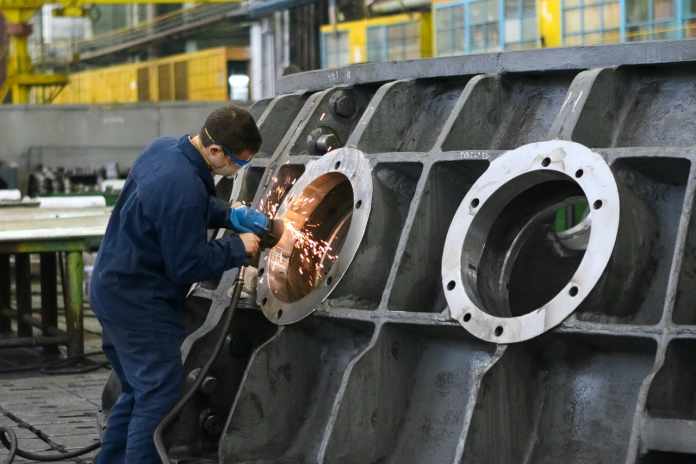You might think that your workplace has the most stringent security measures possible, but the fact is that accidents can happen regardless. Out of all the problems that can occur, a chemical spill can be one of the most severe.
Chemical spills can be deadly towards all parties involved, and they also tend to get worse as time goes on. That means that when one happens, you and your employees need to take immediate action to resolve the problem.
But what exactly should you do?
Keep reading to learn about the types of damage that chemical spills can cause, as well as how the right emergency response plan can help mitigate the severity.
Here are 3 different types.
Table of Contents
Human Health Effects of a Chemical Spill
If the chemicals pouring out are poisonous or toxic, then a spill may cause illness in humans. Depending on exposure levels, certain, more potent chemicals, may even cause death.
Aside from being toxic, many chemicals and gases are also corrosive. These can burn your hands if you touch them, cause damage to your eyes, and can also impact your ability to breathe.
Some chemicals might not impact your health right away, but many cause long-term side effects. For example, studies have linked asbestos exposure to an increased risk of lung cancer.
Damage to Structures
In addition to harming humans, many chemical spills also damage the structure that houses the chemical. In most cases, this is a laboratory or office.
If the chemical that spills is flammable, then fires or even explosions can occur. These can cause vast amounts of structural damage, and in extreme cases where the foundation incurs enough damage, can lead to the collapse of the building as a whole.
Certain types of chemicals can also linger in the structure for long periods of time. This can prevent employees from returning back to work, as specialized teams have to spend time first ensuring that it’s safe to do so.
Damage to the Environment
Some of the worst chemical spills in history have also caused enormous damage to the environment.
Chemical substances like petroleum have been behind many ecological disasters in recent years. One of the most infamous examples of such an event is the 2010 BP oil spill, which continues to impact wildlife and the environment to this day.
Aside from impacting marine life, chemicals can also impact soil. This can then cause entire areas to become uninhabitable for both plants and animals.
The Importance of a Chemical Spill Emergency Action Plan
The fact that chemical spills can happen regardless of safety measures means that your workplace needs to always be prepared for them. Having a chemical spill emergency action plan in place will allow you to respond efficiently, limiting the amount of damage done.
Here are the 4 steps you’ll need to include in your plan.
Be Clear on the Severity
In order to clean the chemical spill up, you’ll first need to assess the damage and severity of the incident.
If the accident is severe, then your priority should be evacuating everyone away from the area. You might also need to contact medical and fire personnel if the spill is too large for standard chemical procedures to take care of.
In extreme cases, you may need a hazmat team to come and take care of everything. HCI is one example of an emergency response team that works to resolve chemical spills. You can learn more about them here: http://www.hcienv.com/services/spill-response.asp.
Provide PPE Equipment
Your next step should be to ensure that anyone who’s involved with the clean-up has the required PPE or personal protective equipment.
The exact PPE that you’ll need depends on the chemical in question. For less dangerous and corrosive chemicals, it may just be a pair of gloves. For more toxic ones, you may need to provide respirators.
Make sure that your workplace has the necessary equipment, and that it’s ready to go at all times.
Stop the Flow
To prevent further damage, the primary goal of the response team should be to stop the flow of the chemical.
Again, it depends on the situation, but stopping the flow may involve putting a cap over any openings, setting a container upright, or applying putty over a leak.
If there are any nearby heat sources, make sure to shut those down as well, especially if the chemical is flammable.
Use a Kit to Repair the Damage
Once you have the flow under control, your next step is to repair any damage. Make sure that your workplace has a spill kit to help you.
Using spill kit components like pillows and pads, carefully absorb the chemical before disposing of the absorbents in specialized bags. Remember to not put them in a regular trash bin.
You’ll then want to clean the entire area with water and soap to ensure that there isn’t any residue left behind.
Take the Necessary Steps to Prevent Chemical Spills in the Workplace
While it’s important to have a plan in case something goes wrong, remember that the best way to cut down on the severity of chemical spills is to prevent them from happening altogether. Make sure to follow proper safety guidelines to ensure that you and your employees stay safe.
Do you now have a better understanding of how to handle chemical spills in the workplace? If you do, take some time to check out some of our other articles for more helpful guides and tips.
















